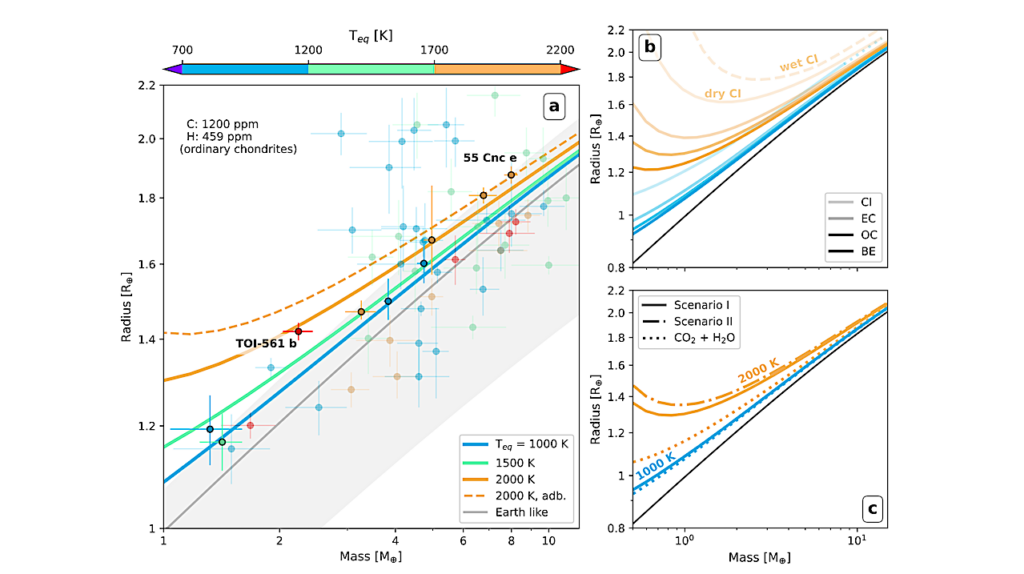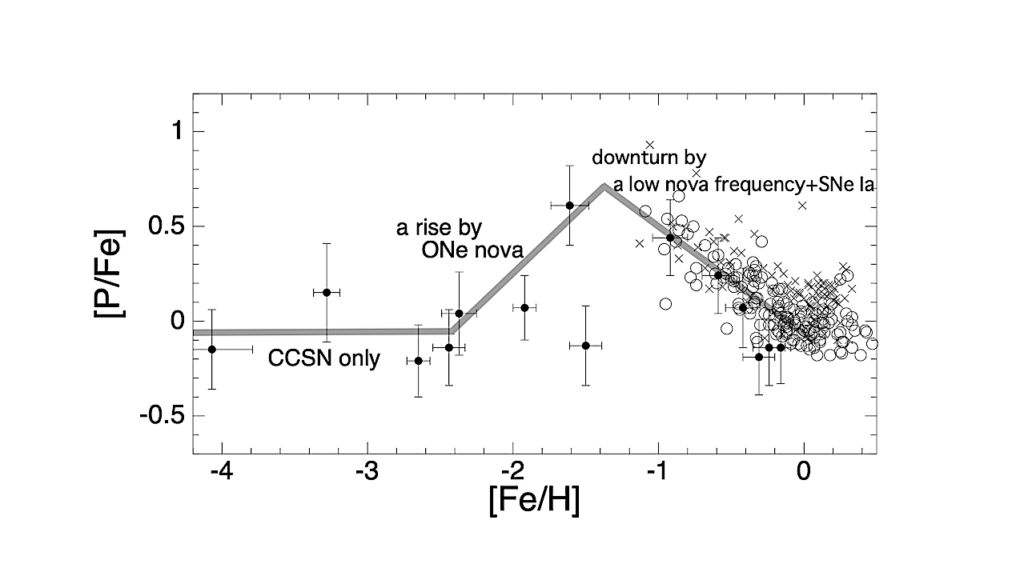The Metallicity and Carbon-to-oxygen Ratio of The Ultra-hot Jupiter WASP-76b from Gemini-S/IGRINS

Measurements of the carbon-to-oxygen (C/O) ratios of exoplanet atmospheres can reveal details about their formation and evolution.
Recently, high-resolution cross-correlation analysis has emerged as a method of precisely constraining the C/O ratios of hot Jupiter atmospheres. We present two transits of the ultra-hot Jupiter WASP-76b observed between 1.4-2.4 μm with Gemini-S/IGRINS. We detected the presence of H2O, CO, and OH at signal-to-noise rations of 6.93, 6.47, and 3.90, respectively. We performed two retrievals on this data set.
A free retrieval for abundances of these three species retrieved a volatile metallicity of [C+OH]=−0.70+1.27−0.93, consistent with the stellar value, and a super-solar carbon-to-oxygen ratio of C/O=0.80+0.07−0.11. We also ran a chemically self-consistent grid retrieval, which agreed with the free retrieval within 1σ but favored a slightly more sub-stellar metallicity and solar C/O ratio ([C+OH]=−0.74+0.23−0.17 and C/O=0.59+0.13−0.14).
A variety of formation pathways may explain the composition of WASP-76b. Additionally, we found systemic (Vsys) and Keplerian (Kp) velocity offsets which were broadly consistent with expectations from 3D general circulation models of WASP-76b, with the exception of a redshifted Vsys for H2O. Future observations to measure the phase-dependent velocity offsets and limb differences at high resolution on WASP-76b will be necessary to understand the H2O velocity shift.
Finally, we find that the population of exoplanets with precisely constrained C/O ratios generally trends toward super-solar C/O ratios. More results from high-resolution observations or JWST will serve to further elucidate any population-level trends.
Megan Weiner Mansfield, Michael R. Line, Joost P. Wardenier, Matteo Brogi, Jacob L. Bean, Hayley Beltz, Peter Smith, Joseph A. Zalesky, Natasha Batalha, Eliza M.-R. Kempton, Benjamin T. Montet, James E. Owen, Peter Plavchan, Emily Rauscher
Comments: 13 pages, 8 figures, 2 tables; accepted for publication in the Astronomical Journal
Subjects: Earth and Planetary Astrophysics (astro-ph.EP)
Cite as: arXiv:2405.09769 [astro-ph.EP] (or arXiv:2405.09769v1 [astro-ph.EP] for this version)
https://doi.org/10.48550/arXiv.2405.09769
Focus to learn more
Submission history
From: Megan Weiner Mansfield
[v1] Thu, 16 May 2024 02:20:36 UTC (1,369 KB)
https://arxiv.org/abs/2405.09769
Astrobiology








